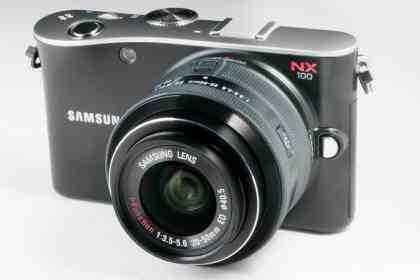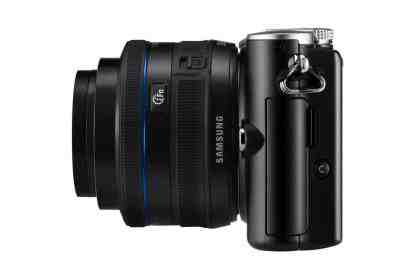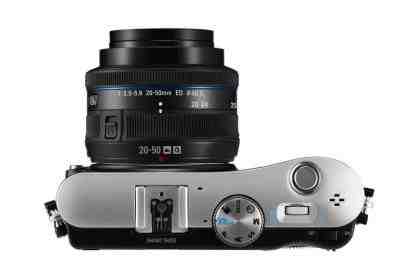The NX100 is part of a new breed of camera – so new in fact that no one seems to agree on what to call them. They’re defined by pocket-sized dimensions, large SLR-style sensors and interchangeable lenses.
The NX100 joins these ranks, already populated by the superb Sony NEX-5 , plus various models from Panasonic and Olympus. It also has much in common with the Samsung NX10 , sharing lenses with it, but this new model’s compact- rather than SLR-shaped design makes more sense for this type of camera.

The camera body isn’t as slim or as light as the NEX-5 but its kit lens is much stubbier, retracting down to 40mm when not in use. The downsides are a relatively meagre 2.5x zoom range and the lack of optical image stabilisation. Both cameras are also available with non-zooming pancake lenses, making them much more pocket-friendly, although we didn’t have a chance to test the NX100 with its 20mm f/2.8 lens.

Like the NEX-5, there’s no built-in flash, but while the NEX-5 includes an external mini flashgun in the box, Samsung’s one is considerably bulkier and costs an additional £112. The accessory shoe can also house a GPS receiver or an electronic viewfinder. The latter has a basic 201,000-pixel resolution and costs £133.
Samsung makes a big fanfare about the i-Function button that adorns the NX100’s lens. Pressing it switches the role of the manual focus ring to exposure compensation, white balance and ISO speed duties, plus shutter speed and aperture when relevant. It’s a nice idea but we found it a little clumsy to cycle through the various options. The dedicated buttons for exposure compensation, white balance and ISO speed on the back panel proved faster, with the wheel surrounding the navigation pad used to make adjustments.
There’s another dial on the top of the camera, and three rotary controls is an impressive quota for a compact camera. The spot focus area can be moved by pressing the centre of the navigation pad followed by the four directional keys, while the top-mounted wheel adjusts its size. There are further dedicated buttons for exposure lock and depth-of-field preview, while a Function button provides access to resolution, metering and other photographic settings. The superb 3in AMOLED screen presents some smart menus, too, such as an on-screen dial for adjusting the self-timer from two to 30 seconds.

These controls would be impressive on an SLR at this price, so it’s great to find them on a compact camera. Performance was more in line with compact than SLR cameras, though, taking 1.4 seconds between shots and longer in low light where the autofocus struggled to lock onto subjects. The continuous mode started enthusiastically at 2.9fps but lasted for just seven JPEG frames before slowing to 1.2fps. Raw continuous shooting slowed to 0.5fps after just four frames.
